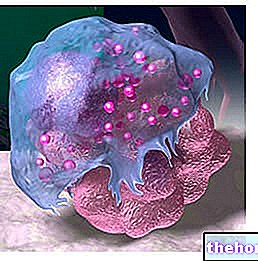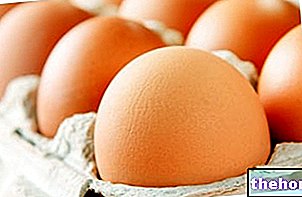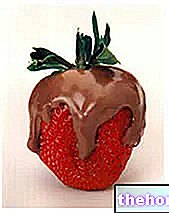«The stomach: references to anatomy and physiology
Regions of the Stomach
The stomach is an organ in the shape of an elongated sac, located between the esophagus and the duodenum. About 25 cm long, it has a capacity of 1.5-2 liters.
The stomach is divided anatomically into the following regions:
- the bottom, placed above and to the left of the junction between the esophagus and stomach (esophagus-gastric);
- the cardias, corresponding to the gastroesophageal junction;
- the body, which represents the greater portion of the stomach and which is located between the bottom and the antrum;
- L"cave, final portion of the stomach, which extends from the small curvature to the pylorus;
- the pylorus, which represents the boundary between the stomach and the duodenum.

Functions of the stomach
The stomach performs numerous and important functions. First of all it acts as a real reservoir for the bolus that arrives from the esophagus, storing it until it is completely attacked by the gastric juices. The containment capacity is entrusted to the regions of the bottom and of the body, where the nutritional material stays for about 1- 3 hours, in relation to the quantity and quality of the food ingested.
In this area of the stomach the bolus, waiting to be pushed into the intestine, is attacked by the gastric juice.
Gastric juice
Viscous liquid produced by the gastric glands located along the back wall and body.
Like all gastrointestinal secretions, gastric juice is mainly made up of water (about 97%). The abundant presence of liquids is necessary to dilute the bolus, which from a semi-solid mass becomes a thick broth, called chyme.
In addition to water, digestive enzymes are also present in the gastric juice which, all having the same function, take on a singular name (pepsinogen). The composition of the gastric secretion also includes other peptides, such as mucoproteins, intrinsic factor and an enzyme called lipase.
The amount of gastric juice secreted in 24 hours amounts to about three liters.
Hydrochloric acid, Pepsin and Protein digestion
Hydrochloric acid activates pepsinogen to pepsin.
The pepsinogen is constituted by the whole of the enzymes secreted in the lumen of the stomach. These are produced in the form of inactive precursors which, in order to fully carry out their digestive function, must be activated by pepsin.
pepsinogen = inactive form pepsin = active enzyme.
This activation is mediated by hydrochloric acid which, by detaching a chain of 40 amino acids from the pepsinogen, converts it into pepsin:

The proteolytic enzymes must necessarily be secreted in an inactive form because, if not, they would digest the same cells that produced and stored them. The function of pepsin is in fact to initiate the digestion of food proteins.
Hydrochloric acid, in addition to activating pepsin, creates favorable environmental conditions for its action. Remember that each enzyme works at an optimal pH, which in the case of pepsin is particularly low (2-3).
- Hydrochloric acid represents an excellent defense against germs introduced with food, which are largely inactivated by the strong acidity. Its antiseptic properties had already been tested by Spallanzani in the seventeenth century who, after immersing fragments of meat in the gastric juice, noticed a delay in the processes of putrefaction.
- Thanks to the presence of hydrochloric acid, gastric juice is able to digest particularly resistant cells and tissues, such as connective tissue. This substance, present mainly in the muscles of animals, is particularly difficult to digest, as it is made up of very resistant proteins. like collagen.
- Hydrochloric acid denatures proteins, facilitating their digestion. Most proteins, including those taken with food, are found in a tertiary structure. In this form, the amino acid chains are wrapped around themselves to form a sort of ball. Denature it means breaking the internal bonds that keep the protein in this globular configuration. In practical terms, the proteins introduced with food are "unrolled" thanks to the presence of hydrochloric acid. The activity of enzymes responsible for the digestion of proteins, thus detaching the individual amino acids (pepsin), is thus greatly facilitated.
Intrinsic factor
Glycoprotein secreted by the gastric mucosa which, by binding the vitamin B12 introduced with the diet, allows its absorption.
In the duodenum a link is formed between intrinsic factor and vitamin B12. The complex, resisting the digestive action of numerous proteolytic enzymes, continues unaltered along the digestive tract, until it reaches the ileum (last part of the small intestine) where vitamin B12 is absorbed.
In the absence of intrinsic factor, vitamin B12 is almost completely eliminated in the stool. The resulting avitaminosis is responsible for a typical anemia, called pernicious (or megaloblastic).
Pepsin, lipase, mucus, regulation of gastric secretion "
Stages of the gastrointestinal digestive process "




























